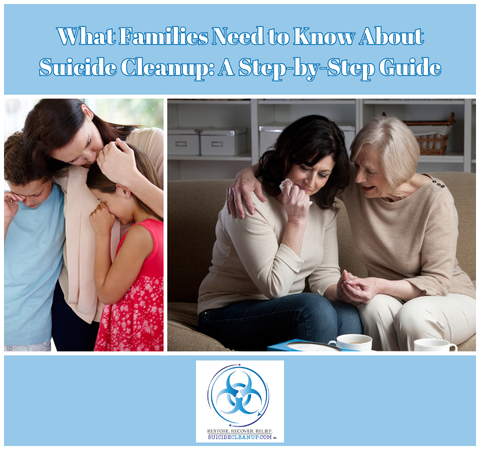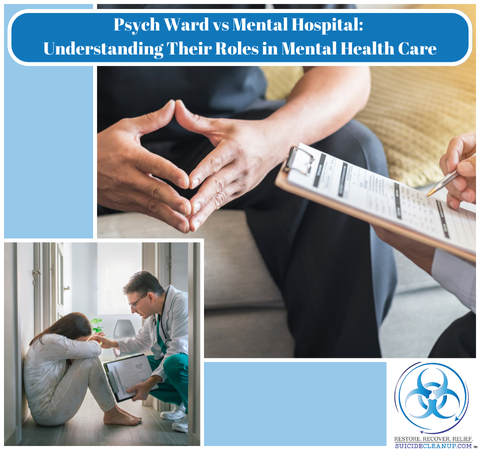
What Happens to the Body After a Suicide
July 20, 2021
5 Common Myths About Suicide
August 26, 2021Anyone who works in the deathcare industry will tell you that suicide is contagious. Or, at least it seems that way. As a former mortician and present death scene cleaner, I can personally attest to how common chain suicides really are. The process begins with a heartbreaking or shocking loss, and grief spirals out of control among friends and family members.
- The scientific term psychologists use for suicidal thoughts is “suicide ideation.”
- It’s not necessarily a medical condition, but it is a recognized phenomenon sometimes associated with grief.
Suicide is uncomfortable subject, which makes it sometimes taboo topic to our culture. But it’s a conversation that’s necessary to have. Today, the team here at Suicidecleanup.com is here to talk about the reality of suicide, suicide ideation and chain suicides.
What is “Suicide Ideation”?
Suicide ideation means “thinking about suicide.”
- Suicide ideation can be passive when it’s thoughts like “I wish I would die in my sleep.”
- Or, suicide ideation can be thoughts that are more active, like planning a suicide, dabbling with suicide methods or making attempts.
- Although both passive and active suicide ideation should be taken seriously, active thoughts generally suggest an immediate risk.
Any suicide attempt, even if it seems half-hearted, poorly executed or unlikely to work, is still an attempted suicide and should be treated seriously.
Young people don’t attempt suicide for “attention.” Even if it seems like they’re joking about it, they can be experiencing dangerous thoughts and emotions, which means all behaviors relating to it need to be taken seriously.
But we can’t always see what’s going on in other people’s minds. This is why it’s important to have the discussion. Know what signs to look for, especially if there’s been a surprising or particularly heartbreaking death in your community or your child’s school.
No one should experience the shock that comes later.
Warning Signs to Assess
Everyone experiences grief. And it affects our behaviors. But keep an eye on your friends and family for these signs of depression and suicidal thoughts:
- Isolation or avoidance — someone doesn’t want to socialize or take part in their usual activities
- Giving away possessions
- An increase in substance use / abuse
- Mood swings that include irritability and even rage
- Extreme anxiety
- Behaving like they’re “saying goodbye”
- Or other unusual behaviors
Keep in mind that you are not qualified or trained to professionally assess your loved one’s mental state. Communication, talk therapy and communal support groups can go a long way towards solving these emotions and professionally assessing one’s mental state after a loss.
You Are Not Alone.
Before we get any further, know that help is available. If you’ve stumbled across this article because you’re thinking about harming yourself, remember that help is only a phone call away. You are not alone. Call the national suicide hotline right now at 800-273-8255, or hop on their website to chat with someone. The service is totally free and completely anonymous.
Now, on to the reality of suicide contagion, chain suicides, and cluster suicides.
Suicide Contagion Among Young Adults
Suicide is much more common among kids and adolescents, despite there being more documentation in older people. This is a worldwide issue, not only a problem in the US. Sadly, the loss of these young lives goes beyond disrupting families by disrupting entire communities. The negative psychosocial effects cascade throughout groups of people, affecting everything from local economics to school performance.
Ultimately, suicide is not contagious in the same way that other diseases — say Pink Eye, for instance — are contagious.
So how does it happen?
The Cluster Begins
Suicide clusters are groups of people that attempt or died by suicide shortly after one another. Suicide clusters can also be referred to as suicide chains, because similar to a chain link, the deaths are connected.
Almost always, a chain of suicides among teens begins with a surprising loss. Perhaps a schoolmate was the victim of a violent crime or died in a DUI-related accident. Sometimes an emotionally unwell teen takes their life. The first link of the chain is forged.
A Community Grieves
Parents, family members, neighbors, school staff, and friends all grieve the young person’s loss. And grief is a complicated process, especially for young people. They haven’t developed as many coping mechanisms, and their teenage brains aren’t fully developed.
Remember your teenage years? It was probably an awkward time. Now compound those feelings with crippling grief, new fears about one’s mortality, and an inability to cope with this further stress. Sometimes it’s enough to drive a young person to suicide, and they will undoubtedly think about it.
Let’s not gloss over the other factors either:
- substance abuse
- pop culture
- music
- movies
Many sources of external pressure can cause difficulty for an adolescent (or younger!).
At Suicidecleanup.com, our team is dedicated to helping families in times of crisis after a suicide event. We’re here to direct you to help you might need, whether that’s getting help to find a therapist or clear confusion on legalities you might have.





